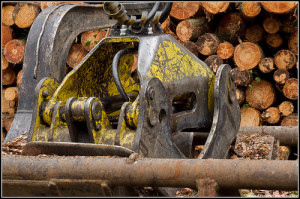Health and safety strategies for older workers need to be different than they are for other workers because their injuries hit harder and last longer.

Photo credit: Disco-Dan on Flickr, licensed by Creative Commons
“It’s not the same.”
That’s the word from Jim McCaskill, WorkSafeBC’s regional director for Vancouver Island.
He’s talking about health and safety strategies for older workers and why they need to be different. One reason is because their injuries hit harder and last longer – and this means employers need to adapt their approach as people work to 65 and beyond.
Jim will be raising awareness of this important issue during his keynote – The Changing Demographics of the B.C. WorkForce – on Tuesday, May 29 in Campbell River, B.C., Canada at the 5th Annual Upper Island Safety Conference, hosted by the Strathcona Regional District.
“What’s the difference in how we approach our health and safety strategies – on a firm to firm basis, on a day to day basis – that will change to reflect the realities of having older workers in our workforce?”
The above question is what Jim wants to explore with the group of forestry harvesters and manufacturers at the conference. A few people from health care usually attend, but most are from the primary industries, he said, when I asked which industries are represented.
So much work, so few workers
“One of the issues with the forestry companies is they are so busy and have so much work to do but they don’t have any young people training to go into the woods. It’s been the cyclical nature of the industry for so long,” Jim said, adding that many leave for Fort McMurray and elsewhere.
“The young guys say: ‘I’m not going to pick up a chain saw like my dad did,’ and then some of these older guys stay in very harsh conditions in very tough employment – in the workforce much longer than they had intended.”
He says it’s in employers’ interests to keep this older workforce safe – for their own sake, of course, and so they can keep enough workers in good health and ready to work (not injured at home, terrible in its own right, but also bad business for the company lacking in workers).
Sleep, fitness, and lifestyle are key
“You have to invest more in their overall fitness, more in their overall lifestyle choices and issues, like adequate sleep,” Jim said, describing benefits that go beyond the workplace. “People will enjoy a happier healthier life if they are more rested.”
I wrote about one such lifestyle initiative to get logging truck drivers walking outside their cabs more often to avoid the negative health effects of a sedentary lifestyle. Logging truck drivers watch their steps describes an “an easy, fun, and inexpensive” challenge posed by the BC Forest Safety Council in which 42 participants were given free pedometers for tracking the number of steps they took each day. They logged their steps for a month, set goals, and competed for prizes – a great example of motivating people for change. Know any other examples?



We need to make sure that the working environment is safe for all workers. Continually educating workers is so important in creating a safe work environment for all.